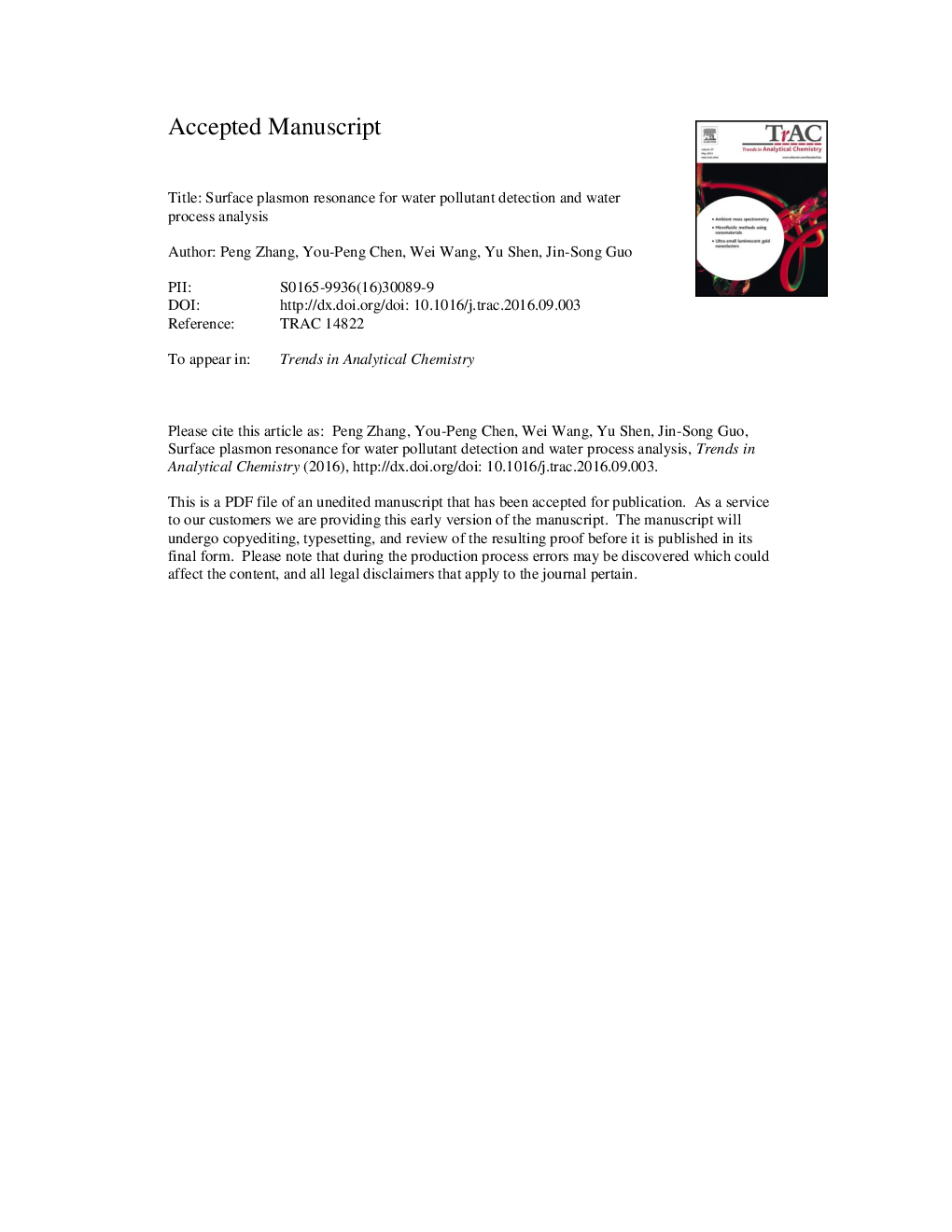| Article ID | Journal | Published Year | Pages | File Type |
|---|---|---|---|---|
| 5141710 | TrAC Trends in Analytical Chemistry | 2016 | 63 Pages |
Abstract
Appearance of various trace and/or emerging pollutants and deteriorated water pollution events challenge existing analytical methods and water treatment technologies. In the past 15 years, a technology termed surface plasmon resonance (SPR) has been widely used for detecting various types of environmental analytes and for improving the water treatment efficiency. In this review, SPR principles and surface modification methods are summarized. Applications of SPR in the environmental detection of heavy metals, organic pollutants and bacteria over the past decade are illustrated. In addition, the use of SPR in monitoring microbial attachment, movement, and biofilm growth and in characterizing antifouling materials is described. While SPR is widely used, there are still considerably more capacities that can be exploited to fully utilize SPR in the investigation of the water pollution control process.
Keywords
Related Topics
Physical Sciences and Engineering
Chemistry
Analytical Chemistry
Authors
Peng Zhang, You-Peng Chen, Wei Wang, Yu Shen, Jin-Song Guo,
